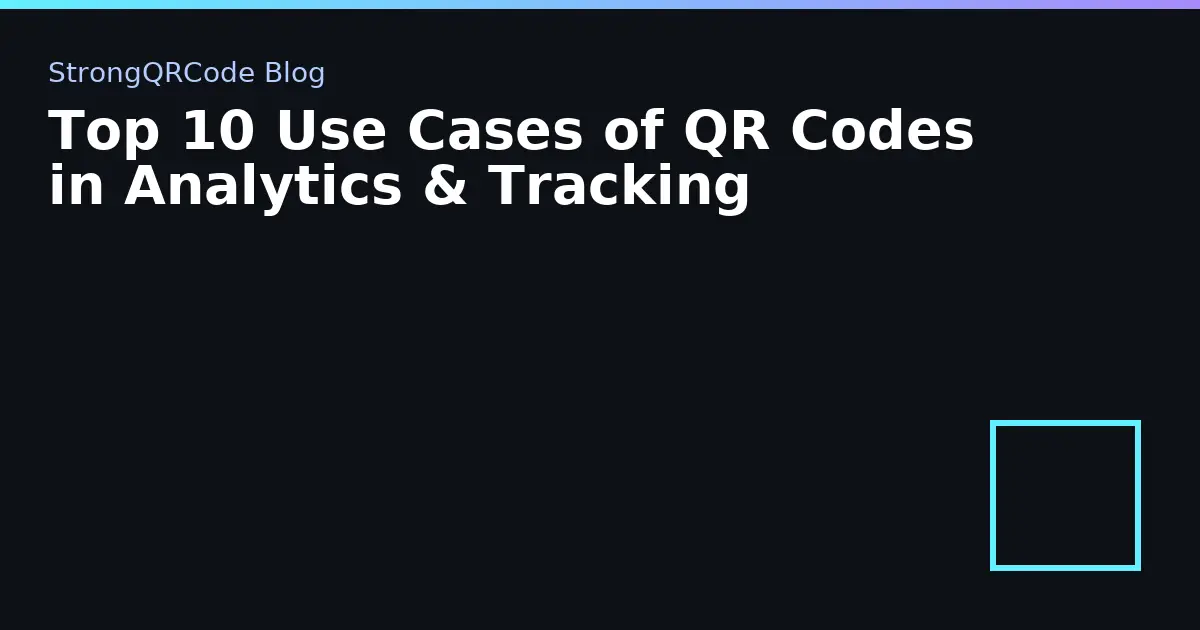Top 10 Use Cases of QR Codes in Analytics & Tracking

Analytics & Tracking benefit enormously from simple, scannable QR codes. In this in‑depth guide, you’ll learn how to plan, design, generate, test, print, and measure QR codes that consistently scan — using the free tools on StrongQRCode. Everything is done in your browser, so your data never leaves your device.
Step‑by‑step: generate a reliable QR code
Open StrongQRCode. Enter your destination (URL, Wi‑Fi credentials, vCard, email, or text).
Click Generate. Keep foreground dark (#000) and the background white for maximum contrast.
Choose error correction M or Q. This protects the code if it’s scratched or printed on textured material.
Set an adequate quiet zone (the blank border). 4–8 modules is safe for most print sizes.
Export as PNG for digital screens, or SVG for print (vector, never pixelates).
Test on multiple phones (iOS/Android), at the intended distance and lighting.
High‑impact use cases in Analytics & Tracking
Point‑of‑sale posters with “Scan to pay” or “Scan for receipt.”
Table tents and menus with “Scan to order” or “Scan for allergens.”
Business cards: “Scan to save contact” (vCard) or “Scan to book a meeting.”
Event signage: “Scan for schedule,” “Scan for tickets,” or “Scan to check‑in.”
Packaging: “Scan for instructions,” “Scan for warranty,” or “Scan to register product.”
Design rules that make codes scan faster
Keep the background pure white. If the substrate is colored, place a white panel behind the QR.
Avoid “reverse” white‑on‑dark codes for print unless you thoroughly test; many scanners fail.
Add a brief call‑to‑action under the code (“Scan for menu”): CTR increases 15–40% in A/B tests.
Don’t compress too much data into the code: shorter URLs = less dense modules = easier scanning.
Place at eye level for posters; 2–3cm wide for business cards; 3–5cm for signage.
Common mistakes (and how to fix them)
Printing too small or on glossy materials → increase size or use matte paper.
Insufficient quiet zone → add a white margin around the code (4+ modules).
Low contrast or colored backgrounds → enforce black on white for critical uses.
Broken or long URLs → use a branded short link or redirect.
No testing → always test with 2–3 devices and scanning distances before mass printing.
Simple ways to track scans & attribute ROI
Append UTM parameters to your URL (source=qr, medium=print, campaign=summer‑flyers).
Use a short link service with analytics if you need daily scan counts per location.
For dynamic content, point the QR to a redirect you control and update the destination there.
Recommended tools
Ready to create yours? Generate your free QR code now or explore More QR types.
FAQs
Is the generator free for Analytics & Tracking?
Yes. No watermark, no account. Everything runs locally in your browser.
Should I use PNG or SVG for Analytics & Tracking?
PNG for screens; SVG for print because it scales without losing quality.
How big should my printed QR be?
As a rule of thumb: minimum 2 cm for arm’s‑length scans; 3–5 cm for posters.
Can I add a logo inside the QR?
Yes, but keep error correction at Q or H and test, because a logo covers modules.